Wellington, Shropshire
Up to 1834
Wellington had a workhouse by at least 1748 when the poor were "farmed" by a tailor named Thomas Hazlehurst who received a quarterly payment in return for providing inmates with food, clothing, medical care, and — if required — burial (Baugh et al, 1985). He also obtained income from the inmates' labour. The workhouse was used from 1748 by the parish of Newport and in 1750-51 by Berrington. The workhouse accommodated up to 56 inmates in 1776, and in November 1797 the residents comprised 10 men, 14 women, and 20 children. The number of inmates fluctuated considerably, from 186 in April 1801 down to only 39 in October 1802. In 1797, the workhouse was relocated from Street Lane to the southern side of Walker Street.
Wrockwardine had a workhouse from at least 1760 when the poor were farmed by Thomas Hazlehurst for a payment of £50 a year. By 1782, contractors were no longer being used and the parish rent a building to use as a workhouse. By 1801, a new workhouse was built about half a mile west of the parish on land owned by the Tiddicross charity — the is building now known as Tiddie Cross. Two years later, John Hollis was contracted to run the workhouse for £50 year for which he provided inmates with bread, cheese, beer, and beef or mutton at least once a week. In 1814, the premises included "a kitchen, paupers' kitchen, five bedrooms containing 13 beds, a "dead room" with 3 spinning wheels and 1 long wheel, pantry, brewhouse, and cellar." (Baugh et al, 1985)
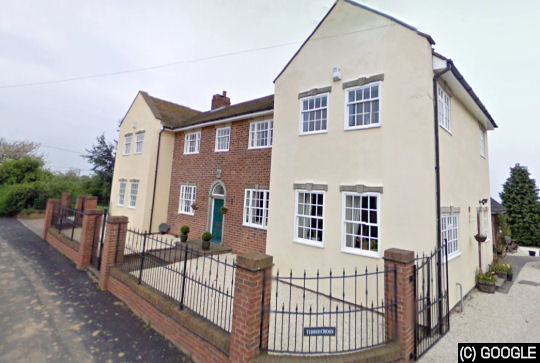
Wrockwardine parish workhouse site, 2009
High Ercall (Ercall Magna) had a workhouse by 1751. A new building was erected in 1814 on the road between Waters Upton and Rowton.
After 1834
Wellington Poor Law Union was formed on 4th June, 1836. Its operation was overseen by an elected Board of Guardians, 19 in number, representing its 11 constituent parishes as listed below (figures in brackets indicate numbers of Guardians if more than one):
County of Salop: Bolas Magna, Ercall Magna (2), Eyton-on-the-Wild-Moors, Kinnerley, Longdon-upon-Fern, Preston-on-the-Wild-Moors, Rodington, Upton Waters, Wellington (5), Wombridge (2), Wrockwardine (3).
Later Addition: Hadley (from 1898).
The population falling within the Union at the 1831 census had been 17,945 with parishes ranging in size from Longdon-upon-Fern (population 109) to Wellington itself (9,671). The average annual poor-rate expenditure for the period 1833-35 had been £6,207 or 7s.11d. per head of the population.
The Wellington Board of Guardians retained and enlarged the old Walker Street workhouse to accommodate 160 adult paupers, while up to 100 children were housed at the former Ercall Magna parish workhouse, at Waters Upton. The former Wrockwardine parish workhouse was also rented between 1838 and 1841.
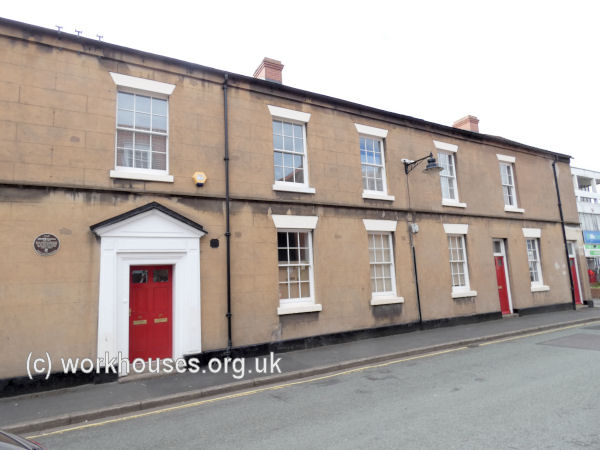
Former Walker Street workhouse, Wellington, 2020.
© Peter Higginbotham.
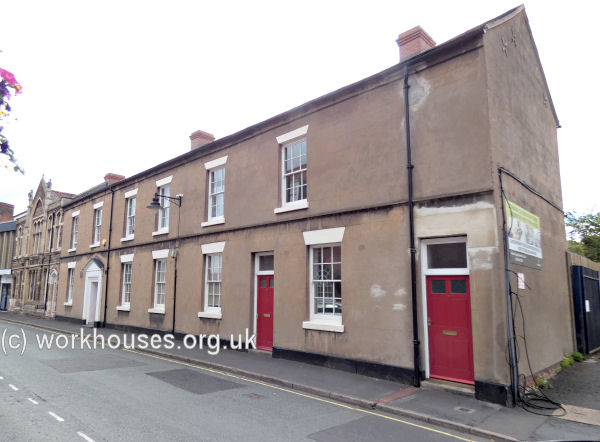
Former Walker Street workhouse, Wellington, 2020.
© Peter Higginbotham.
In 1874-5, a new union workhouse was erected on the north side of Street Lane (now Holyhead Road) at the south-west of Wellington. It accommodated 350 inmates and the architects were the partnership of Bidlake and Fleming. The workhouse location and layout are shown on the 1901 map below.
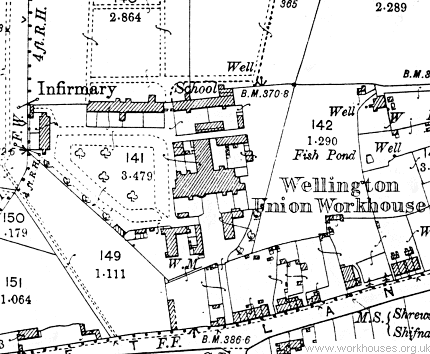
Wellington workhouse site, 1901.
The new workhouse had a three-storey T-shaped main building and a number ancillary blocks including an infirmary, fever hospital and school.
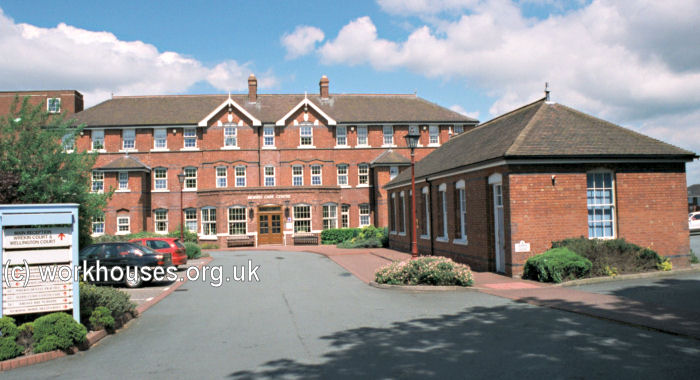
Wellington main building from the south, 2001.
© Peter Higginbotham.
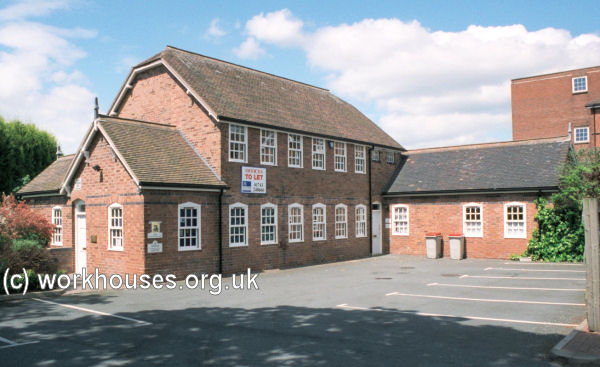
Wellington casual wards(?) from the south, 2001.
© Peter Higginbotham.
After 1930, the Street Lane site became a Public Assistance Institution under the conyrol of Shropshire County Council. During the Second World War, patients from several Birmingham hospitals, including the Children's Hospital, were evacuated here to avoid German bombing. In 1948, the establishment joined the new National Health Service as the Wrekin Hospital. In 1993, the main building was converted for use as a nursing home.
From 1836, the union's offices were located at Walker Street. The new board room at the Street Lane workhouse was apparently not used for board meetings because of its distance from the town. In 1897, the Guardians acquired new adminstrative premises at Edgbaston House also on Walker Street, later a solicitors' offices.
The Walker Street workhouse was later occupied by the Union Brewery, and some of the surviving workhouse buildings now form part of the Wellington Library.
Children's Home
The Wellington Union established a children's home at Brooklyn House, 135 Watling Street, Wellington. In 1924, it could house 48 children, with Robert Langley as Superintendent and Mrs S.J. Langley as Foster Mother. By 1929, the home had moved to The Mount, Haygate Road, Wellington.
Staff
Inmates
Records
- Shropshire Archives, Castle Gates, Shrewsbury, Shropshire SY1 2AQ. Please note that records may contain gaps or have access restrictions - please check before visiting. Limited holdings include: Guardians' Minutes (1836-1928); Children's Home Committee minutes (1913-30); etc.
Bibliography
- Baugh, GC et al (1985) A History of the County of Shropshire: Volume 11: Telford (Victoria County History).
Links
- None.
Unless otherwise indicated, this page () is copyright Peter Higginbotham. Contents may not be reproduced without permission.


